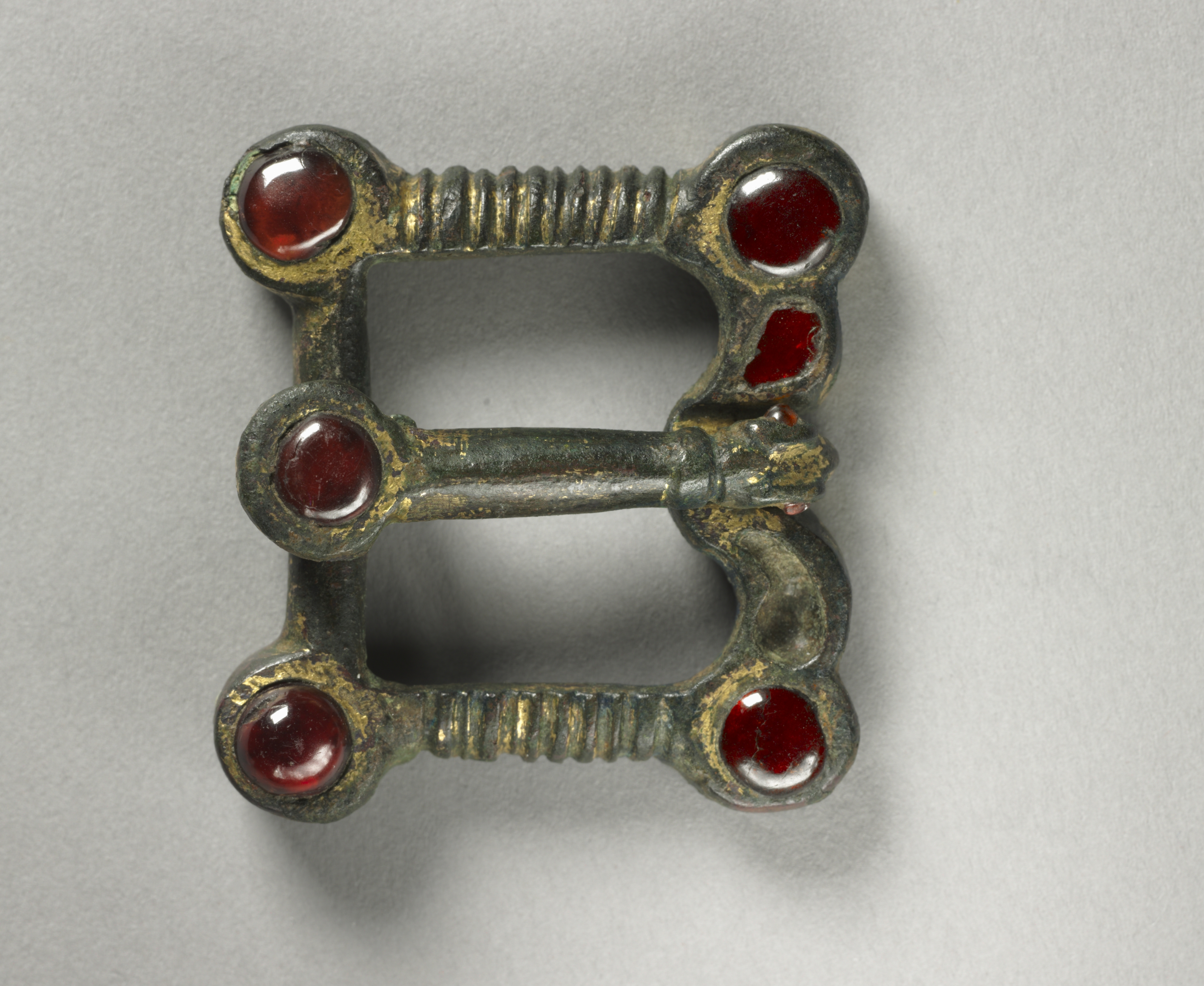The Cleveland Museum of Art
Collection Online as of April 25, 2024

Buckle with Animal-Shaped Thorn and Belt Plate
400s CE
Overall: 4.3 x 4.5 cm (1 11/16 x 1 3/4 in.)
Location: 106A Migration Period & Coptic
Did You Know?
During this time it was popular to wear gold inlaid with precious stones.Description
Between the AD 200s and the 600s, the European West is characterized by the so-called "barbarian invasions," a term referring to the movement of various Germanic people into the Roman Empire. The period of the great migrations of these Germanic peoples was one of uncertainty and disorder. By the AD 300s, the collapse of Roman military power in the western provinces was increased by the westward movement of the Huns, an especially fierce enemy from the east. The Huns drove before them displaced Germanic tribes—the Visigoths, Ostrogoths, and Lombards—as they advanced deep into the western provinces. These Germanic peoples were composed of many national groups with diverse customs and traditions. Long nomadic, they gradually settled and took to farming, though always preferring maritime commerce and fishing. They were not attracted to the monumental arts of architecture and sculpture until they had long settled an area. By contrast, the tombs of these migratory people were filled with weapons, tools, and jewelry, often magnificently decorated. The art of the Germanic peoples is almost exclusively one of personal adornment—a portable art that followed men and women to their graves.- -1981(Paul Drey Gallery, New York, NY, sold to the Cleveland Museum of Art).1981-The Cleveland Museum of Art, Cleveland, OH
- The Year in Review for 1981. The Cleveland Museum of Art, Cleveland, OH (organizer) (February 17-March 21, 1982).
- {{cite web|title=Buckle with Animal-Shaped Thorn and Belt Plate|url=false|author=|year=400s CE|access-date=25 April 2024|publisher=Cleveland Museum of Art}}
Source URL:
https://www.clevelandart.org/art/1981.9